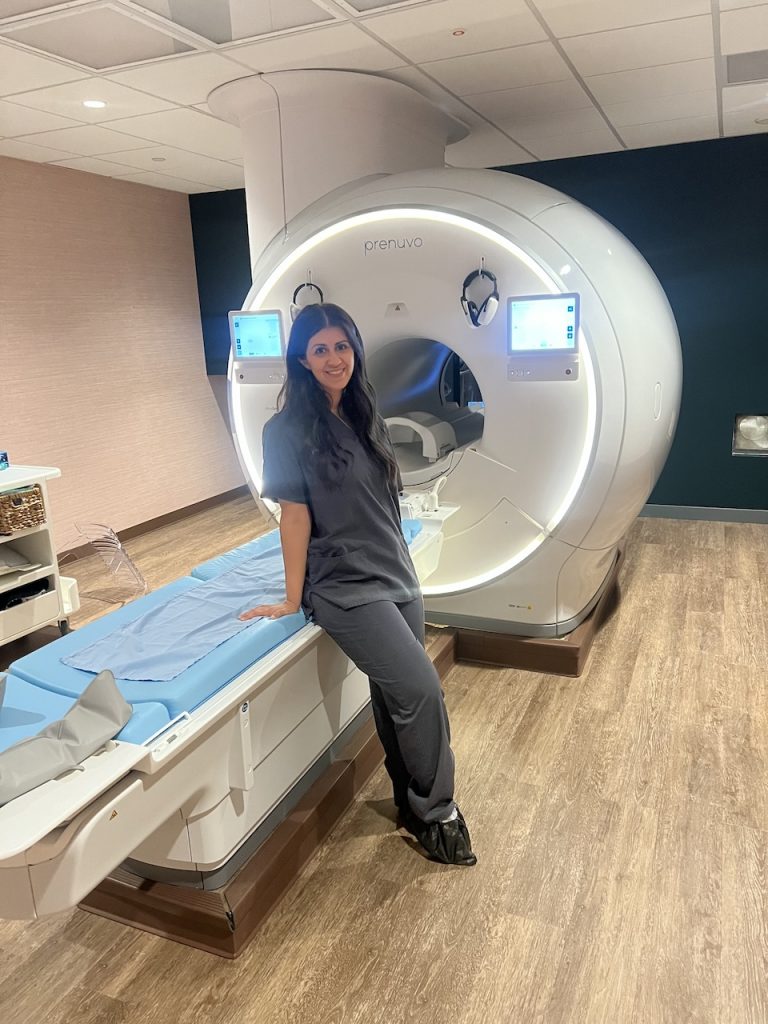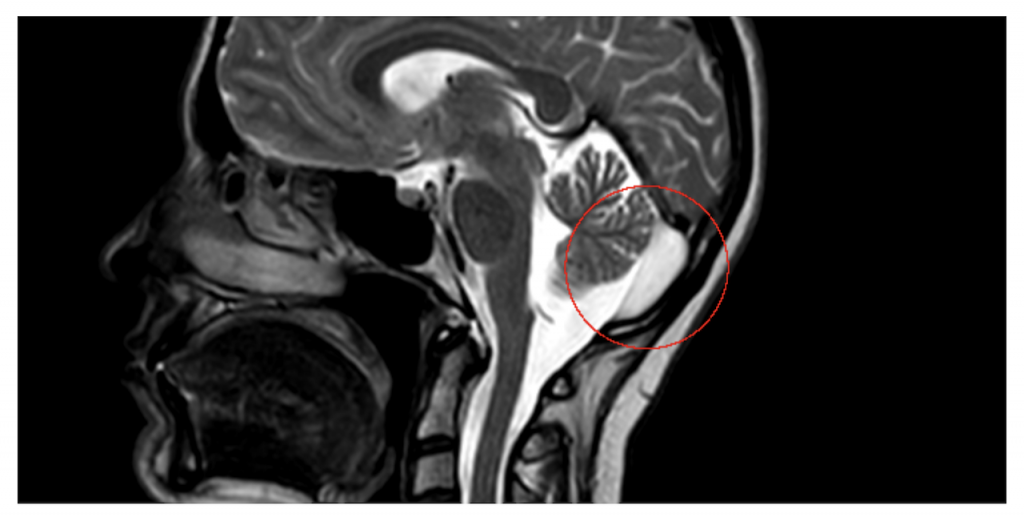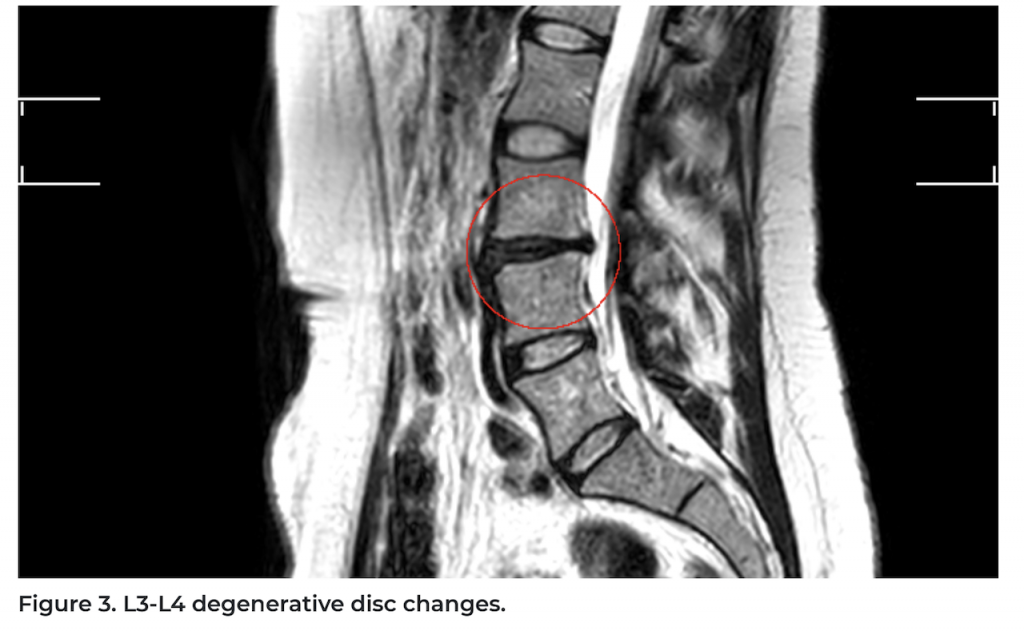Full Body Scans: The Experience & A Warning From Leading Oncologists: Don't Skip Approved Cancer Screenings
- I recently underwent a whole-body MRI scan, thanks to Prenuvo. It was an incredibly informative experience that has reminded me about the importance of regular screening guidelines for the public.
- MRI scans are typically considered a safe and non-invasive imaging procedure with minimal risks associated. However, like any medical procedure, it is essential to be aware of potential risks and safety concerns so that you can make informed decisions about your healthcare.
- Prenuvo’s Chief Medical Officer Dr. Daniel Durand says, “We [Prenuvo] aren’t a replacement for primary care. We’re something new and innovative that’s in between to give people access imaging at the front of the health care experience rather than after going through lots of other steps. So what I would say to them [someone worried about false positives] is, there’s a chance we’ll find something early that you need to know, that you haven’t had symptoms about yet.”
- Not commenting directly on Prenuvo, but rather the on trend of full-body scans to check for cancer without doctor’s recommendation, board-certified medical oncologist Dr. Larry Norton, who is truly renowned in the oncology community, suggests more studies need to be conducted to understand better whether these types of scans are more beneficial than the standard of care.
- For Dr. Norton and a number of experts we contacted, the big question is do these full body scans lead to better outcomes?
In addition to my history of back pain, which I imagine must have derived from my years of figure skating and also, possibly, from teaching myself how to snowboard through trial-and-error, my dad is living with a type of adult-onset muscular dystrophy (MD) and my mom was recently diagnosed with stage I endometrial cancer, which she thankfully was able to have removed via a total hysterectomy this year. So, I was certainly curious as to what my spine looked like or whether I had any abnormal growths in my body.
Read More
My Prenuvo experience began with scheduling my scan, followed by stepping into the company’s New York City location, which was equipped with soothing-decor and kind-hearted personnel. I was then given my own private waiting room to change into scrubs and remove my jewelry before lying comfortably in the MRI machine.
Despite feeling slightly nervous of what was to come before walking into the building, I felt completely relaxed once I stepped into the Prenuvo office, and even more so when I met the technician who assisted me throughout the scan.
I must admit, although I don’t get claustrophobic, I did feel my heart rate quicken as the movable bed I was lying on made its way into the machine. However, that brief feeling of nervousness went away moments later when I heard the technician speaking to me via the headphones I was wearing.
Once the MRI was underway, I was also able to watch a new rom-com film called “A Family Affair” on Netflix, featuring actors Zac Efron, Nicole Kidman, and Joey King. The TV screen was behind the machine but a mirror above my eyes somehow made it appear as I had some type of movie-theater view of the screen, making the hour I spent in the machine fly by.
Following the MRI, I was able to choose from a variety of snacks and beverages, like coffee, water, or juice, in the small kitchen area between the room where I had my scan and my private changing room. I was then informed that I would be receiving a call from a nurse practitioner once my results come in.
And to my surprise, in just a matter of days, I received my scan results and images via an easy-to-understand Prenuvo app.
The most alarming thing I noticed on my results, which was labeled as a “benign, incidental finding,” was an arachnoid cyst in my head, a non-cancerous growth and something John Hopkins Medicine describes as “the most common type of brain cysts that are often congenital, or present at birth (primary arachnoid cysts).” Additionally, the cysts are not tumors, but fluid-filled sacs.
That portion of my results read, ” There is a extra-axial cyst located at the midline of your posterior fossa of your brain.The cyst measured 3.5 cm x 3.4 cm. The cyst contained cerebrospinal fluid. No significant mass effect upon adjacent structures. Most commonly incidental/asymptomatic.
“Arachnoid cysts are cerebrospinal (CSF) fluid collections which usually occur around the brain. In most cases this condition is present from birth. No further investigations are required if you are asymptomatic.”

Seeing this was shocking, but after making an appointment to speak with a neurosurgeon, as I wanted a second opinion, I no longer have any worries as the doctor confirmed my cyst wasn’t cancerous and there’s nothing to worry about unless I start experiencing symptoms, which is incredibly rare.
Meanwhile, as for the results of my spine, nothing surprised me there as I often experience back pain. However, it did offer some validation as to why my back sometimes has pain. The scan found five findings and three of those required minor attention.
The results noted that I have mild degenerative spondyloarthropathic changes in my cervical, thoracic, and lumbar spine, as well as minor disc changes in various parts of my spine, as well as a disc bulge.

The scan also revealed a benign cyst discovered in my kidney that’s 0.4 cm in diameter, as well as that I have dense breasts.
“Your breast tissue has a mixture of fat (>50% fat content) and heterogeneously dense glandular tissue,” my scan stated.
Breast density refers to the composition of the breast tissue and it’s something that’s determined by the appearance of the breasts on a mammogram, the screening tool used to detect breast cancer in women. And now, with the knowledge that I have dense breasts, I’m aware I’m at a higher risk for developing breast cancer, something that has been shown in several scientific studies.
RELATED: Millions of Women With Dense Breasts — A New Congressional Law — What You Need to Know
Additionally, I’ll be turning 35 later this year, and although an independent panel of experts called the U.S. Preventive Services Task Force (USPSTF) says that women should start getting mammograms every other year at the age of 40, I’m planning to get screened sooner than later since I’m at higher risk at breast cancer with dense breasts.
Dr. Cindy Ly, a radiology doctor at NYU Langone Medical Center, previously told SurvivorNet, “The dense tissue has a “masking effect on how well we can perceive cancer and find cancer on mammograms.”
Survivors Encourage Women to Ask Their Doctors About Dense Breasts
After looking through my results and speaking with a nurse practitioner, I also had the opportunity to speak with Prenuvo’s Chief Medical Officer Dr. Daniel Durand who stressed the importance of being informed before undergoing any type of testing.
When I asked him what he would tell someone who may be worried about receiving a false positive after undergoing a Prenuvo scan, Dr. Durand explains, “Every single test has limitations, every single test has benefits and every single test has risks. So with regard to false positives, it really depends on how you define a false positive.
“When you go to the doctor and they do a physical exam and they see something they’re worried about and they say, maybe you should see a specialist about this. Perhaps it’s a little lesion on your skin. And they send you the dermatologist and the dermatologist looks at it and they say, I think it’s okay. Most people don’t then run around talking about how their primary care doctor gave them a false positive. They’re usually thankful that, ‘hey, we found something, it got further detection and ultimately the patient got reassurance.’ So what we’re doing at Prenuvo, is we’re practicing medicine.”
Dr. Durand continues, “This isn’t a binary test, like a covid test, that’s just yes or no. We have specialist physicians, the radiologists, each of whom have anywhere between five or six years of training after medical school just to be able to read exams and they’re doing an exam using the MRI machine to look inside of you. And then on top of that, we have a nurse practitioner or a primary care doctor that claims the results and contextualizes them for the patients.
“We also aren’t a replacement for primary care. We’re something new and innovative that’s in between to give people access imaging at the front of the health care experience rather than after going through lots of other steps. So what I would say to them [someone worried about false positives] is, there’s a chance we’ll find something early that you need to know, that you haven’t had symptoms about yet.”

Dr. Durand explains further, “We all are human beings. We know from the outside that we all look a little different. Everybody’s unique. That’s part of the beauty of humanity. And inside we see the same thing. So the scan is a process, getting to know yourself, seeing if there’s something very serious, and then there’s a first scan.
“There’s often things that need to be clarified or just informational. Usually there’s no symptoms associated with it, but something to be aware of.”
Expert Cancer Screening Resources
- Could A Urine Test Be The Future of Prostate Cancer Screening? Leading Experts Weigh In
- The PSA Blood Test and a Rectal Exam are Vital for Prostate Cancer Screening
- Black Women May Need To Start Breast Cancer Screening At 42, According To A New Study
- Bi-Annual Mammograms At Age 40 Now Recommended For Most Women, What The New Breast Cancer Screening Guidelines Mean For You
- New Cervical Cancer Screening Guidelines Recommend HPV & Pap Testing Now Start at Age 25
- Why Is Late-Stage Cervical Cancer On The Rise? The Importance of Pap Smears and Testing For HPV
He concludes, “We generally believe that information and knowledge is power and that information is empowering to those who have it. So coming to Prenuco is going to give someone a lot more information about their health.
“We believe that the balance of that, and so many other things in medicine, is going to lead to improved engagement, earlier diagnosis, better outcomes, mastery of somebody’s health by that person. But, there’s no way to engage in that without the risk of learning something you don’t want to know. And this is true of all screenings.”
Dr. Durand says those at Prenuvo do their best to assist patients who may feel anxiety toward the scan, however, he admits there is no way to eliminate it entirely,” noting that the fear of the unknown is why some people choose not to get any types of screenings done.
As for the pricing of Prenuvo’s scans, a 60-minute whole body scan costs $2,499, a 45-minute scan of just the head and torso costs $1,799, and a 25-minute torso-only scan costs $999.
Dr. Durand said the scans are “perceived as higher cost because people are paying for it out pocket versus insurance covering it.” He said it shouldn’t come as a shock that insurance isn’t able to cover these types of MRIs because “insurance usually takes years to cover something new.”
Additionally, Prenuvo prides itself for offering whole body MRIs that are safe [no radiation] and non-invasive [no injection of harmful dye/intravascular contrast dyes].
The scans also do not expose those getting it to harmful ionizing radiation that different types of imaging methods (X-rays, CT scans, PET scans) use.
Just this summer, John Hancock, an insurance company based in Canada, became the first life insurer to offer $500 off Prenuvo scans to customers.
Prenuvo currently has open locations in New York City, the one I went to, as well as Silicon Valley, Los Angeles, Dallas, Boca Raton, Chicago, Atlanta, Vancouver, a partner location in Minneapolis, and a research-only facility in Boston.
However, although these types of scans are available to the public via Prenuvo, and it’s competitors Ezra, Neko Health, and SimonMed, it’s important to understand these MRI scans are not part of regular screening guidelines and experts say this should absolutely not replace traditional screenings.
For example, the American College of Preventive Medicine, recommends against using whole-body scans for early tumor detection in asymptomatic patients. They also urge low-risk women aged 65 years or older not to undergo cervical cancer and for men not to have routine PSA-based screenings for prostate cancer.
Additionally, in a National Cancer Institute-funded study, published in the Annals of Internal Medicine last year, researchers found that cancer-screening guidelines “don’t adequately capture the potential harms of cancer screening.”
It’s clear that screenings like, mammograms, colonoscopies, and HPV or Pap smears, can help people find precancerous growths, receive treatment early on, and reduce deaths from disease, but the NCI advises, “screening can also cause various harms including physical harm, worry and stress, inaccurate results, and unnecessary follow-up procedures.”
Questions Surrounding Full-Body MRIs
Not commenting directly on Prenuvo, but rather the idea of getting full-body scans to check for cancer without doctor recommendation, board-certified medical oncologist Dr. Larry Norton, MD, FASCO, FAACR, who is truly renowned in the oncology community and serves as the Medical Director of the Evelyn H. Lauder Breast Center at Memorial Sloan Kettering Cancer Center, suggests more head-to-head studies need to be conducted to better understand whether these types of scans are beneficial.
Dr. Norton, who also serves Memorial Sloan Kettering’s Norna S. Sarofim Chair and Senior Vice President in the Office of the President, tells SurvivorNet, “The basic bottom line is that just because you can do something doesn’t mean that you should do it. Is it possible to scan a whole body with an MRI apparatus? Absolutely. We know that’s possible. The question is, and the big question is utility, does it help people, does it lead to better outcomes?
“Does it lead to increased survival, for example, does it lead to finding things earlier so they can be taken care of most efficiently with these side effects and with better outcomes? And none of that’s been shown. The point is that it’s not been studied with the kind of rigor that we have evolved in our field. I’m expecting of diagnostic or screening tests. Can it be done? Yes. Does it give results? Yes. Can you find things in it that properly should be attended to most likely? Does it find things that if you never found them, they never would’ve caused any problem?
“Most likely to find things that are not abnormalities, but that requires extensive evaluation, including surgery sometimes to find out that they’re not abnormalities. Definitely, that’s a problem. That’s the false positives.”
He explains, “Also, the false negatives … if somebody’s getting these scans and think they’re fine and then they have a symptom, they say, ‘Well, why should I go to the doctor when I had a whole body scan and the test didn’t find anything wrong? Why should I go for my colonoscopy? Why should I go for my mammography? Why should I go for my routine skin check when I just had a whole body scan and it came out totally negative.’ So there’s that aspect of it. There are a lot of issues here that really require formal evaluation.
“And the formal evaluation would be a group of people would go there, get their scans annually, a group of people would not get scans, and then you’d see what the ultimate benefit was to the individuals who got the scans. If there is benefit, then it’s something that should be done routinely and insurance companies should pay for it, or countries that have national health systems should pay for it. But you’ve got to do the science first, and unless you do the science, you are shooting the dark and making assumptions about the benefits when you don’t really have the evidence to support that it’s actually beneficial for people.”
To further emphasize the importance of recommended cancer screenings, Dr. Norton adds, “Things like a mammography … colonoscopy, those things have been subject to the appropriate evaluation procedures and found to be beneficial. And so, those are the things that people should do.
“And it’s kind of remarkable that there’s such interest in this [full body scans] when people are not doing the things that we know work such as colonoscopy, such as mammography. Roughly half the people who should be getting annual mammograms are getting them, for example, in the United States, in other countries it’s worse. So that’s really the message, we have proven methods of early detection that do make a difference, and that’s the things that people should be doing. The other point is that from a biology point of view, we don’t know for sure that early diagnosis of some things, of some cancers, for example, we do not know that early diagnosis actually beneficial to the patient.”
Dr. Norton concludes, “We know the advantage of colonoscopies is we find polyps that are not cancerous yet, but could turn into cancer if they’re not removed. So a colonoscopy is actually a cancer prevention test as well as a screening test. For example, mammography extensive research is done that actually shows that it not only can save lives, but it can save breasts because you can do breast conservative surgery, and if you find things at an early stage, it requires much less aggressive therapy to achieve high cure rates. But all of that’s been shown by careful research. None of that’s been shown with total body MRIs.”
Protocols For Screening For Major Cancer Types
It’s imperative to know that early detection is key in many cases, for example, women are advised to start screening for breast cancer at age 40 and people with no family history of colon cancer should begin screening at age 45.
Additionally, cervical cancer screening is advised to begin at 25 with a primary HPV test (a more ‘sensitive’ test than a Pap test) and continue every 5 years, according to American Cancer Society (ACS) guidelines.
Also, the guidelines for prostate cancer screening depend largely on your risk for the disease, and that’s based on several factors including family history, genetics, age, and race.
Screening is simple and consists of a prostate-specific antigen (PSA) blood test and a digital rectal exam to feel the prostate gland. “It’s slightly uncomfortable but painless, and takes less than 30 seconds,” Dr. Edwin Posadas, Director of Translational Oncology and the Medical Director of the Urologic Oncology Program at Cedars-Sinai Medical Center, previously told SurvivorNet.
There’s No One Definitive Symptom for Prostate Cancer, But There Are Clues
Contributing: SurvivorNet Staff
Learn more about SurvivorNet's rigorous medical review process.

